
Inspired by the famous anthropologist Margaret Mead, Laurel Kendall grew up to become an anthropologist herself, specializing in Korean culture. Find out why a pen and paper are your most important tools when you're studying people and their ways of life.

Inspired by the famous anthropologist Margaret Mead, Laurel Kendall grew up to become an anthropologist herself, specializing in Korean culture. Find out why a pen and paper are your most important tools when you're studying people and their ways of life.
1. What do you do?
Laurel Kendall: I'm a cultural anthropologist. Cultural anthropologists are scientists who study people living today or in the recent past. What we call "culture" is everything that makes up the way a group of people live, like how they eat, celebrate, and worship.
It would be an impossible job to study everything about one culture and all the different people — men and women, children and adults — who are part of it. So an anthropologist usually focuses on just one part of a culture. My research focuses on Korean culture, and in particular, Korean religious rituals, women's lives, and marriage.
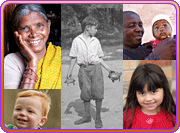
Anthropology helps us better understand people — all of us — as a whole.
2. How did you become interested in cultural anthropology?
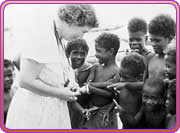
Margaret Mead was a famous anthropologist.
Laurel: When I was in High School, I read a book by Margaret Mead. She was a famous anthropologist who spent her career at AMNH. Reading the book was a revelation. She helped me realize that being a successful girl or boy, woman or man would be different in different cultures.
I grew up in San Francisco where many people of Asian heritage live and where I could experience Asian art, food, gardens, and architecture. I was fascinated with all of this and wanted to learn more about what life was really like in China, Japan, and Korea.
3. Did anyone inspire you to become a cultural anthropologist?
Laurel: In college, I was in awe of the things that my anthropology professors did, like studying and living in another culture. And they wrote and spoke about the people and places with a lot of insight and feeling.
My very first anthropology class made it clear to me that this is what I wanted to do. I wanted to be an anthropologist.
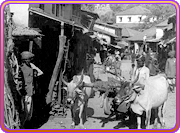
One of Laurel's professors taught about village life in India.
4. What did it take for you to become an anthropologist?
Laurel: A lot of studying! Besides learning all about different Asian cultures, I took a whole range of courses in all fields of anthropology. That included archaeology , biological anthropology, linguistics, as well as my own interests in religion and women's lives.
To specialize in Korean culture I had to read a lot about the country's society, history, politics, religion, and folklore. I also had to learn how to read, write, and speak Korean. Plus, I spent two summers studying Japanese, since books about Korea were sometimes written in Japanese. I had studied some Chinese in college and that helped me because Korean writing sometimes includes Chinese characters.
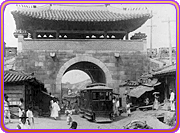
Laurel had to study Korean history. This is what Korea looked like in 1904.
5. How did you decide you wanted to specialize in Korean culture?
Laurel: That was the luck of the draw. I spent my junior year of college studying Chinese in Hong Kong. After graduation I joined the U.S. Peace Corps and they sent me to Korea. I spent three years teaching English to government officials, students, housewives, and businessmen. Since I was teaching at a language institute, I could also study Korean at the same time.
The more time I spent learning the language, the more friends I made, the more I learned, and the more I wanted to do fieldwork in Korea. After I finished my Peace Corps job, I traveled with a backpack through Taiwan , Hong Kong, Macau, Malaysia, Singapore, Thailand, and Indonesia.

Laurel traveled through many places in Asia, including Hong Kong.
6. What was your first project in Korea?
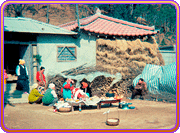
Laurel lived in a Korean village for her fieldwork. She took this photo in 1977.
Laurel: I spent almost two years doing research in a small village near Seoul. Seoul is the capital city of South Korea.
Korea, in general, is a society where men have more privileges than women. I wanted to explore village women's culture through the lens of women themselves. In particular, I was intrigued by female shamans and the rituals and ceremonies they led. A shaman is someone who it is believed can interact with spirits and speak in their voice. They practice healing and predict the future.
During my fieldwork, I lived with a Korean family. Over 35 years later, I am still in touch with them. The village has changed a lot. When I first saw this village, the houses all had thatched roofs. And it took a long time to travel on a bus from the village to the center of Seoul. Now all of the houses have been rebuilt as modern bungalows. I can also get almost all the way to the village by subway from downtown Seoul. And all the grandchildren in the family I lived with have computers and email addresses.
7. What was a typical day like doing fieldwork in Korea?
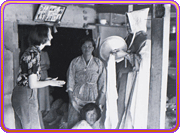
Laurel (left) studied rituals and ceremonies led by female shamans. This photo was taken in 1978.
Laurel: There were no typical days. If there were no rituals, I visited women and interviewed them about their families and their lives.
I spent a lot of time with my shaman friend, who took me to rituals and explained things to me. She introduced me to other shamans and told people that my research was a good and important thing. Then her friends, the other shamans, invited me to their rituals.
8. What was a shaman's ritual like?
Laurel: Shaman rituals took different amounts of time. The divination, a way to see the future, might only take an hour. But people would sit down and talk before and after, so the whole event might take two or three hours. Sometimes families did special rituals, like around the first moon of the Lunar New Year.
But the most important rituals, called kut, would last for many hours. Some would be performed for almost the whole night and start again early the next morning. There would be breaks for meals and everyone would eat together.
At rituals, I would bring my tape recorder, both to record the event and so that the shamans could amuse themselves by singing into it. When the shamans performed kut I wanted to know why the family was holding this ritual. When the shamans spoke in the voice of a god or an ancestor, I wanted to know which one, and what messages the spirit had for the household. I wanted to know what these spirits — and the shaman — had to say about the family's situation.
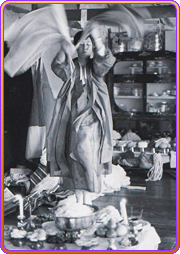
A shaman is someone who it is believed can interact with spirits and speak in their voice.
9. What tools do you use?
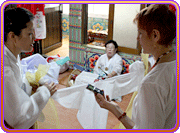
Laurel tape records a Korean shaman ritual.
Laurel: My notebook and pencil are the most important tools of all. My notes are the core of everything that I analyze and write. I take quick notes. I jot them down while we're talking and then go home and expand the notes, writing very quickly on my computer, recording every detail that I can remember. I also use a tape recorder and a simple digital camera. Before computers I typed my notes on a portable typewriter using carbon paper to make copies. I sent one copy back home and kept two copies with me but in different places. I was afraid that if I lost my notes, I would lose all of my work.
I have hundreds of pages of notes from each research project and by now probably thousands of pages of notes altogether. I index them so that I can find information. Before computers I used 5" X 8" cards. I could also cut and paste one set of my notes together by topic. Now I do it all on a computer, which is much faster and easier!
10. Who worked with you on your first project in Korea?
Laurel: Three different women assisted me. They were students from different universities in Seoul. They helped me do some of the interview surveys.
Many of the interviews are recorded on tape. So my assistants helped transcribe the interviews — they listen to the tapes and write them in Korean script. The best way to capture what someone is trying to say is to use his or her actual words as much as possible. I had to translate very carefully.
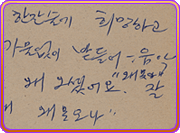
Laurel's assistants helped transcribe the taped interviews into Korean script.
11. What was the most exciting thing you discovered?
Laurel: In traditional Korean society, sons play a more important role in families since daughters move away from their family when they get married. So I was excited to discover that in the shaman rituals that women performed, the women's relatives were important and also needed to be honored as ancestors and sometimes as gods.
Also, the most interesting person I met in Korea is my main shaman, a woman I write about a lot. She had a great sense of humor and had a lot to say about women's rituals and beliefs. She is in her seventies now. We are still in touch, I see her often.
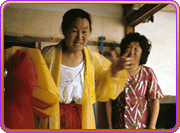
Women play an important role in shaman rituals.
12. What happens to the information you collect in your fieldwork?
Laurel: I write books and magazine articles to share what I've discovered about Korean society. I also teach college classes and make presentations at conferences and as public lectures.
This is Laurel's latest book about shamans in Korea today.
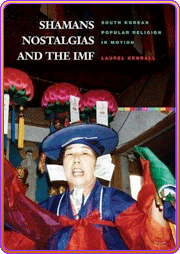
13. What else do you do at the Museum?
Laurel: Curators at the Museum also manage the Museum's collection of artifacts. Sometimes I work with other researchers who visit the Museum to research our collections. Sometimes I help create exhibitions, like Vietnam Journeys and Mythic Creatures. I also helped produce the Korea exhibit case in the permanent Hall of Asian Peoples with a Korean designer, who is now one of my best friends.
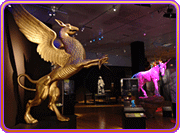
Laurel curated the Mythic Creatures: Dragons, Unicorns, and Mermaids exhibition at the Museum.
14. Do you ever collect artifacts?
Laurel: I don't go to the field with the intention of collecting artifacts. But I sometimes collect objects that I consider to be good additions to the Museum's large collection of Asian artifacts. For example, for the Vietnam Journeys exhibition, we collected a lot of masks, toys, and lanterns used in festivals. We gathered such great data about who made each object and where it was made, I decided that we should add a lot of it to our collection when the exhibition was finished.
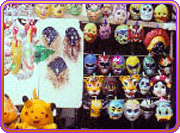
Colorful masks are popular at the Mid-Autumn Festival in Vietnam.
15. Have you ever had your family with you in the field?
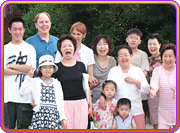
Laurel and her family pose for a picture with some old friends in Korea and their children.
Laurel: Both my husband and son have traveled to Korea with me. My husband is a better photographer than I am. On field trips, he sometimes takes photographs while I talk to people. During the last trip, he also helped me with all the technology, like computers, tape recorders, and digital cameras.
Our son is Korean. He made his first trip back with me when he was three years old. I think it was a great experience for him. Now he is in Korea studying Korean.
Image Credits:
Photos: Margaret Mead: © AMNH; Indian village, Korea in 1904: courtesy of Library of Congress; Hong Kong, courtesy of CIA; Korean village in 1977, shaman rituals, Korean script, Laurel and friends: courtesy of Laurel Kendall; Mythic Creatures, Vietnam Journeys: © AMNH; masks: courtesy of Pham Van Duong, Vietnam Museum of Ethnology; all other photos: istockphoto.com




 Biodiversity
Biodiversity
 Brain
Brain
 Genetics
Genetics
 Marine BiOLogy
Marine BiOLogy
 MicrobiOLogy
MicrobiOLogy
 PaleontOLogy
PaleontOLogy
 ZoOLogy
ZoOLogy
 AnthropOLogy
AnthropOLogy
 ArchaeOLogy
ArchaeOLogy
 Astronomy
Astronomy
 Climate Change
Climate Change
 Earth
Earth
 Physics
Physics
 Water
Water
